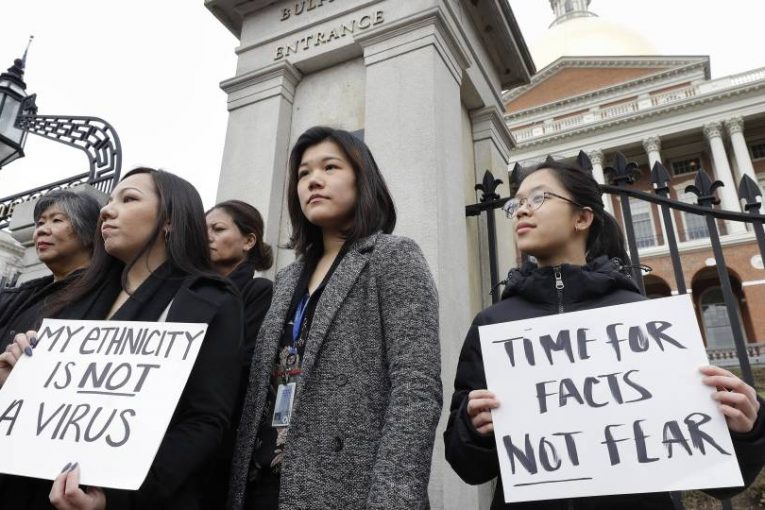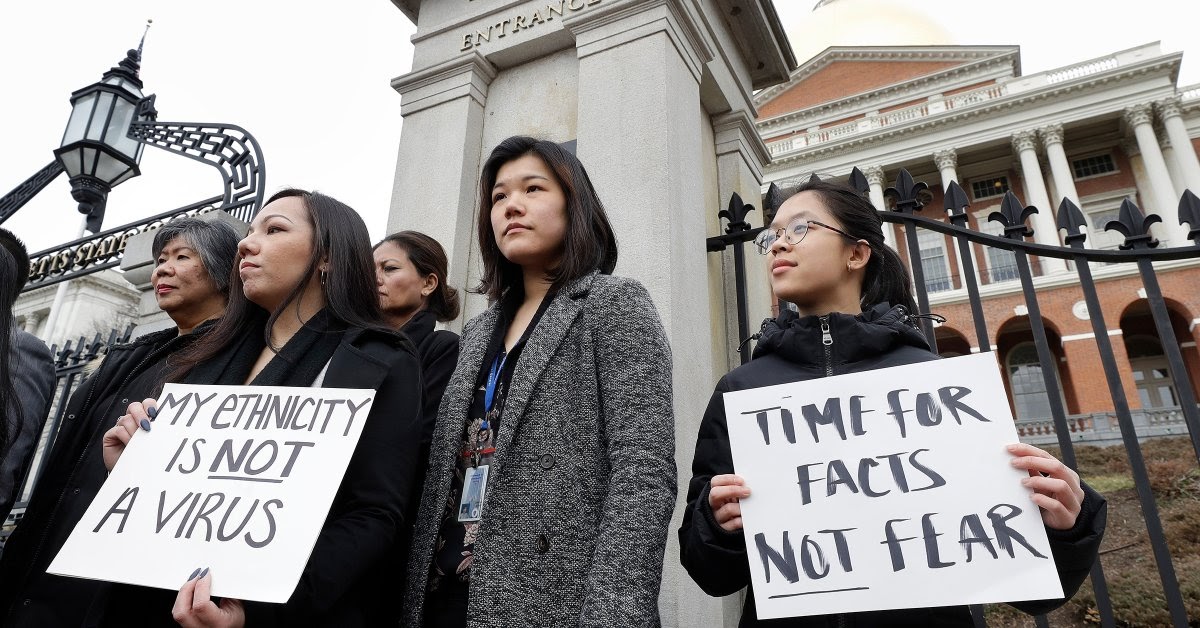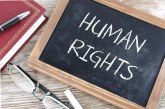

By Gabriella Garcia
Hate crimes, including physical violence and verbal attacks, against Asian-Americans throughout the nation have increased since the beginning of the pandemic last spring, following the hateful messages former President Donald Trump recited throughout his presidency about the Chinese origin of the COVID-19 virus.
When referring to the coronavirus, former president Donald Trump frequently used anti-Asian and xenophobic language, often calling it the “China virus” and insinuating that China was responsible for the ongoing pandemic.
This hateful rhetoric resulted in an exponential growth in hate crimes against Asian-Americans since the beginning of the pandemic, though the number is still unknown as a majority of incidents are not reported.
In March 2020, Stop AAPI Hate, a reporting database for hate crimes against the Asian-American Pacific Islanders communities, was developed as a response to this issue. Within the first three months of its implementation, Stop AAPI Hate received nearly 2,000 reports.
From mid-March to Dec. 2020, the program collected 2,808 anti-Asian hate crime reports. According to KQED, 1,226 of the 2,808 took place in California—with 708 being in the Bay Area alone. In an interview with KQED, co-founder of Stop AAPI Hate, Cynthia Choi, claimed these numbers are likely an undercount; a result of the mistrust in government among impacted communities, backed by the belief that such reports will not lead to justice.
On Jan. 28, 2021, the first of many disturbing videos this year showing a violent physical attack on an elderly Asian-American surfaced on the internet. This particular security footage shows alleged assailant, Antoine Watson, pushing 84-year-old Vicha Ratanapakdee onto the ground as Ratanapakdee took his morning stroll in San Francisco, California.
Ratanapakdee, a Thai immigrant, died from his injuries a day later. Watson has since been charged with murder and elder abuse but has pleaded not guilty.
On Jan. 31, two elderly men, ages 91 and 60, and one Asian woman, aged 55, were attacked on two separate occasions in the Chinatown neighborhood in San Francisco, California. Alleged perpetrator, Yahya Muslim was caught on camera shoving his first victim—the 91-year-old whose name has not yet been released—onto the ground. He then assaulted the other two victims in a similar fashion.
Muslim has since been arrested and charged with three counts of assault and one count of elder abuse, though the assault has yet to be ruled a hate crime.
Another incident occurred Feb. 3 in Manhattan, when a Filipino man, Noel Quintana, was slashed in the face, cheek to cheek, while taking the subway to work. The 61-year-old man’s wounds were so severe that he was unable to speak, Quintana’s family reported. As of now, no suspects have been taken into custody.
The United States’ history of racism against the Asian community extends to the late 19th century when the nation received an influx of Chinese laborers.
Relying on the concept of Manifest Destiny, Anglo-Saxons determined that the Chinese immigrants were undeserving of American citizenship. Justified by the racist stereotypes normalized at the time, the Chinese Exclusion Act later passed in the United States which was the first law to bar immigration solely on race.
A competition between the Asian and Black communities soon emerged from the racial tensions, as the demand for cheap labor caused white political and business elites to valorize Asian immigrants over black workers, according to political scientist Claire Jean Kim. This pitting of Asians against Black citizens (and vice-versa) continues to this day through the model minority myth which was popularized during World War II.
During the mid-20th century, just as the nation reached the end of World War II, sitting president Franklin D. Roosevelt passed an executive order that cleared the way for Japanese internment camps. Although this order affected Italian and German Americans as well, the vast majority of detainees were of Japanese descent.
The misplaced anger towards Japanese-Americans following the bombing of Pearl Harbor had a lingering effect on racism towards not only Japanese citizens but the Asian community as a whole. Such racist sentiments from previous wars, policies and ideologies continue to affect how the United States views racism towards Asians, oftentimes normalizing it.
As CNBC explains, the model minority myth painted the Asian community as a monolith in the attempt to erase the history of racism towards Asians and justify the racism towards the black community. The ideology stereotyped Asian-Americans as hardworking, quiet and economically successful, while inadvertently stating that the black community was not as prosperous due to cultural setbacks—not racism.
Kim states that these problematic arguments blended anti-Asian racism with anti-black racism—two experiences that not only differ greatly but receive different responses from the public as well.
Moreover, because of these established expectations, some of the biggest issues—such as poverty, racism, and lack of education—plaguing various AAPI communities throughout the nation go unnoticed and underreported.
Though President Joe Biden issued a memorandum in January denouncing the anti-Asian behavior, many felt unsatisfied with the lack of justice being delivered and the minimal governmental action taking place to ensure these attacks do not continue.
Moreover, advocates feel the memorandum once again groups Asian-Americans together, inadvertently feeding into the monolith mentality. In an interview with Vox, executive director of the Asian Americans Advancing Justice John Yang said, “What I don’t see here is ensuring that we have a full picture of the Asian American community—specifically recognizing that the Pacific Islander community has different challenges that they’ve faced.”
Vox reports that Pacific Islanders have seen higher COVID-19 fatality rates compared to other groups within the AAPI community. Thus, not only acknowledging but acting upon the differences in the American experience amongst various ethnic groups ensures that everyone’s needs are met, and people are no longer neglected due to racist expectations.

Gabriella Garcia is originally from the Bay Area, California, and is completing her fourth year at UC Davis as a Political Science major and Professional Writing minor.





I looked at this article a couple of times and wondered why the moderator had wiped out all the comments for this article. I just realized that this was a new article on the same subject in the lead position, as this morning’s article was, using the same picture.
I appreciate that the Bay Area examples of the races involved on perpetrator and victim were not hidden, if not called out. However, I’m still not understanding the 1st two paragraphs that discuss Trump, and how Trump’s idiocy is linked to causing this violence. I’ve been reading on this a lot in media the last week, and this violence is certainly happening, but most reports I’ve read state that this violence against elderly Asian people has been going on for some time in Oakland and San Francisco. I’m not discounting incidents that were sparked by idiots linking Asian people to Covid-19.
I am not clear what the issue is with “insinuating that China was responsible for the ongoing pandemic”, which also came up in this morning’s article. There have been plenty of reports of early mishandling and coverups and delays due to political reasons that allowed the virus to spread and to leave that country. I’m certainly not saying that to defend or compare to our own country’s f*cking this up as well, by politicians of both parties, as well as citizens.
Maybe there are idiots who conflate blaming Chinese-Americans for what the mainland Chinese government does, but those people are both dimwits and racists. That’s like blaming Jewish Americans for what Israel does – which does of course happen a lot – so I shouldn’t be surprised at idiots doing the same regarding Asian people, apparently as implied here, even getting Chinese people and Asians in general mixed up. Jews, BTW, are some of Israel’s biggest critics – there’s even a name for this movement/philosophy (I don’t speak the language though, so maybe someone ‘more Jewish than I’ can relate the term).
I’m glad you bring up the ‘model minority’ BS as well. I’ve always held that a positive stereotype is as destructive as a negative stereotype — too ends of the same stick — and that statement that “problematic arguments blended anti-Asian racism with anti-black racism—two experiences that not only differ greatly but receive different responses from the public as well”. One could write a pHD on that statement 😐
Just watched an NBC News story covering this same topic. I didn’t realize it was this prevalent. I’m glad to see the Justice Department is now taking these attacks seriously.
We should all take these attacks seriously… they have affected people we know here, and elsewhere in Yolo County. They say, “if you see it, report it”… I’d add, “if you see it, act to stop it”…
It has been said, ‘all that it takes for evil to thrive, is good folk not acting’…
Well actually,
Notice, I paraphrased, on purpose, hence single ‘quote marks’ (not “….”)… your distinction is noted [and I already knew the complete quote and the source], but excluding women “doing nothing”… purposeful? I don’t think so, you’re better than that… I hope…
Dad said, “some know the words, but haven’t heard the music”… true story… I like music, with due respect to the words, as well… many don’t…